Inside Eagle Leader

By Philip S. Bolger-Cortez
Last year, I talked with Kevin Verssen at Dan Verssen Games about making a game about the late Cold War, and when he accepted, the foundations were laid for Eagle Leader.
From the beginning, it was designed as a NATO companion to Fulcrum Leader, a game already under design by Benjamin Chee and Doug Glover. Benjamin Chee likes to start every game with the same question: “What is the story you are trying to tell?” For Eagle Leader, it’s simple enough: the struggle of USAF and allied NATO Air Forces fighting the Warsaw Pact in the skies and ground of Europe, the aerial companion to the many “What if” campaigns about the Fulda Gap. Initial plans were ambitious– a core game featuring USAF, and a series of expansions to allow players who wanted to play NATO aircraft to allow for a wide variety. I knew I had to recruit a reliable team of developers, so I gathered Mitch Reed, Chris DiNote, and Phil “Doc” Wohlrab to help me, along with James L Young as a team historian.
Eagle Leader is an Air Leader game, a system derived from Dan Verssen’s original Hornet Leader. While Hornet Leader focuses on carrier air operations, and Phantom Leader focuses on Vietnam-era USN and USAF multi-role tactical air, the focus on Eagle Leader is the first fifteen years of the F-15’s history. The development team focused on bringing the late Cold War to life. The current wargame marketplace is awash in hypothetical World War III in the Late Cold War games, ranging from Team Yankee to World at War ’85 to Thin Red Line games’ C3 series to the Free League edition of Twilight 2000. Eagle Leader will join these games telling a similar story to most focused on an alternate World War III– one based as much on propaganda and pop culture as detailed studies of military affairs.
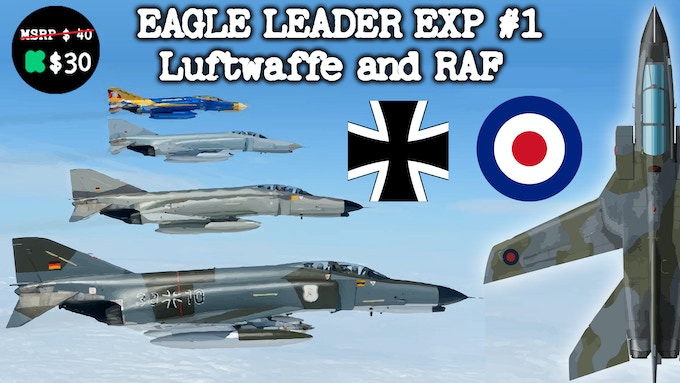
Eagle Leader is similar to existing Air Leader games, building on an established system focused primarily on squadron management and selection of the right weapons and platforms to conduct dangerous missions. Eagle has some notable differences. For one thing, the mix of enemies is different. Eagle Leader’s sites and bandits are more missile-heavy. Hornet Leader focuses on a myriad of enemies ranging from Libya to China to the USSR, and has many AAA sites as a result. By contrast, in the USSR’s frontline units in the 1980s, AAA was less common as more missile air defense artillery came online. To combat these systems, Eagle Leader introduces a reworked electronic warfare aircraft system, with the EF-111 being both more capable than previous EW entries in the series.
Eagle Leader’s expansions focus primarily on the allied powers that would’ve fought alongside USAF. Expansion 1 (Designed by Mitch Reed) introduces the Royal Air Force and the Luftwaffe. Both fly Phantoms and Tornados and get some campaigns focusing on how those air forces would’ve fought as part of the overall NATO defense scheme.
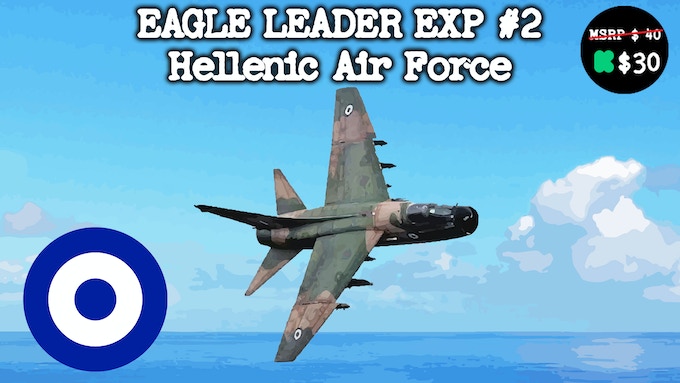
Expansion 2 (Designed by Doc Wohlrab) focuses on the Hellenic Air Force. When I was recruiting designers, we talked about which nations to include. NATO is gigantic, and a huge amount of combat aircraft fly under NATO control, but it’s not possible to focus on each one. Doc selected the Hellenic Air Force and Italian Air Force (Expansion 3) based on a few factors– the most important of which being that the Greeks would have faced a different problem set than the Fulda Gap.
The Greek military would not be pressed into Germany, but rather, would have to contain the southern Warsaw Pact states as well as negate any movement from the USSR’s Black Sea Fleet. Doc’s brought the Greeks to life, with the A-7H as their iconic system, but supported by F-4s, F-5s, and even F-102s.
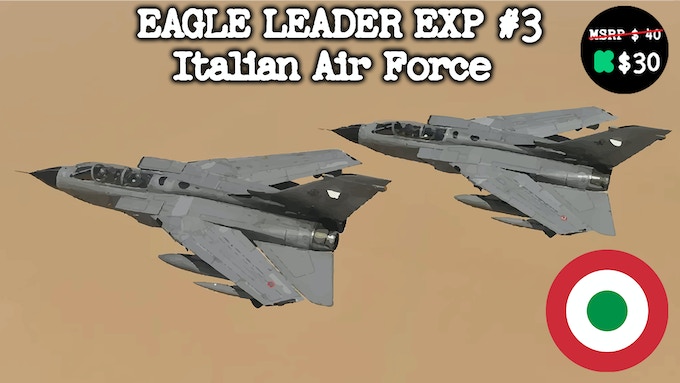
Expansion 3 focuses on the Italian Air Force in the same way. Doc did his best to bring the Italian Air Force’s problem set to life, with the assumption that the Italians would be called to contribute both to the Northern fight and to secure the Caribbean from Soviet allies such as Syria and Libya.
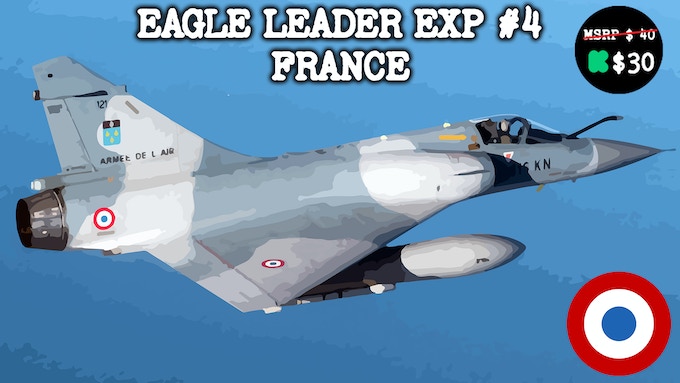
Expansion 4 (One of my designs) focuses on the French. While France’s status within NATO was questionable in the 70s and 80s, there is little doubt that the French would’ve still defended their airspace. In addition, adding France is a good chance to explore French aircraft and munitions, which are distinct from the rest of NATO, which largely relied on US weapons.
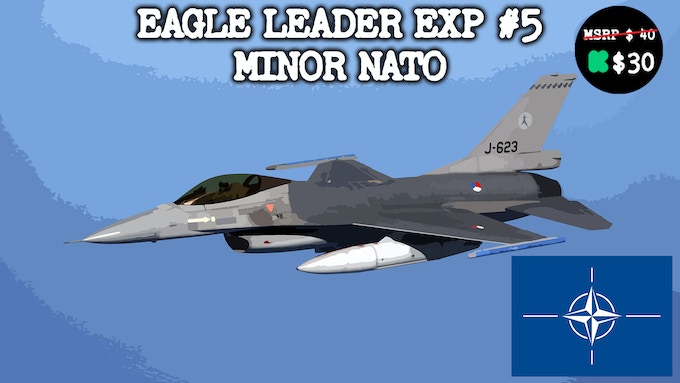
Expansion 5 (One of my designs) focuses on Minor NATO nations. It’s a grab bag of seven nations– Portugal, Spain, Norway, Denmark, the Netherlands, Belgium, and Turkey join the fight. While most fly aircraft seen elsewhere in Air Leader, such as Spanish Hornets, the Danes bring the J-35 Draken. By the 1980s, the Draken wasn’t the Danish first choice for air-to-air but was still in widespread service as a strike aircraft. None of the aircraft in the Minor NATO pack have more than one type of aircraft, which further helps model the role of smaller nations in NATO– even if they don’t have the number of pilots as the major nations, the smaller nations still contribute and hold their airspace.

Expansion 6 (Designed by Chris DiNote) focuses on Aces, legendary pilots who would’ve emerged hardened by World War III. Chris studied real fighter air-to-air victories to build his baseline for what kinds of people would’ve made it to the treasured five kills. Interestingly, some of Chris’ research suggests part of the reason we have no post-Vietnam Aces is because of how USAF learned to fight, the more institutional approach to air warfighting perfected in the 1970s and practiced through today at USAF’s Weapons School and USN’s TOPGUN. Aces focus on these elite pilots.
The final expansion, Expansion 7 (One of my designs) is focused on Experimental Aircraft, aircraft that never were or only ever were in small batches for testing. I wanted to bring to life a lot of what people in the 1980s and early 1990s thought the future of airpower was going to be. The aircraft included are most American, but I did also include one French Aircraft (the Mirage G) and one Anglo-American-German concept (the X-31). The others all have their reasons for never going into widespread production– the F-29 was not chosen to go forward.
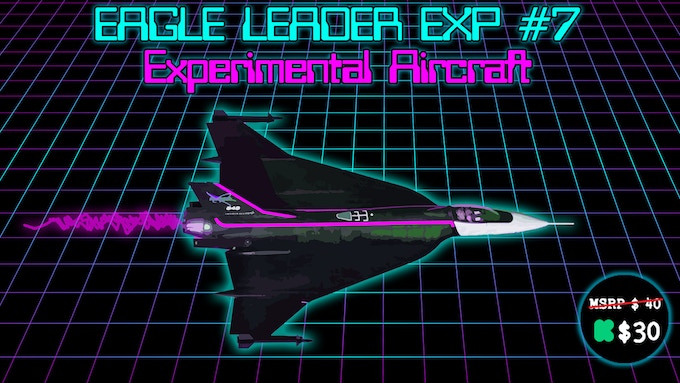
The F-16XL lost out to the F-15E Strike Eagle. The F-18 High Alpha Research Vehicle was only used for testing, even though it examined the possibility of thrust vectoring on an F/A-18 platform. The F-15 STOL was finally manifested in the late 1980s but only served as a NASA demonstrator. The F-20 Tigershark served as the basis for the F/A-18, but the F-20 itself was passed on. The F-21A was a leased IAI Kfir, and only ever served as an aggressor. Lastly, the ASF-14 was deemed too expensive, but I couldn’t pass up the opportunity to include a Tomcat in USAF livery. I wanted these aircraft as expensive, low-density, but very capable aircraft, a chance to play with planes that never were.
Between the core box and the expansion, Eagle Leader represents nearly every NATO nation and its airpower as it stood in the 1980s. The game uses the existing Air Leader engine to put you in the commander’s seat to manage multi-role fighters, strikers, and air superiority fighters across the skies of Europe and the Mediterranean in a high-intensity conventional fight. Eagle Leader has been a challenge to create, but it’s nice to see it on Kickstarter. If you like what you’ve read here, consider backing it.
Jump on this Kickstarter here.

Good article! Althougb I think you meant the Italians need to lock down the Med rather than the Caribbean 🙂
I’m also interested to see that Doc Wohlrab and Dr Young are involved. Might just have to spend some money here…
“Expansion 3 focuses on the Italian Air Force in the same way. Doc did his best to bring the Italian Air Force’s problem set to life, with the assumption that the Italians would be called to contribute both to the Northern fight and to secure the Caribbean from Soviet allies such as Syria and Libya.”
I assume you mean the Mediterranean, unless the Italians are going to spend WWIII on a tropical cruise 🙂